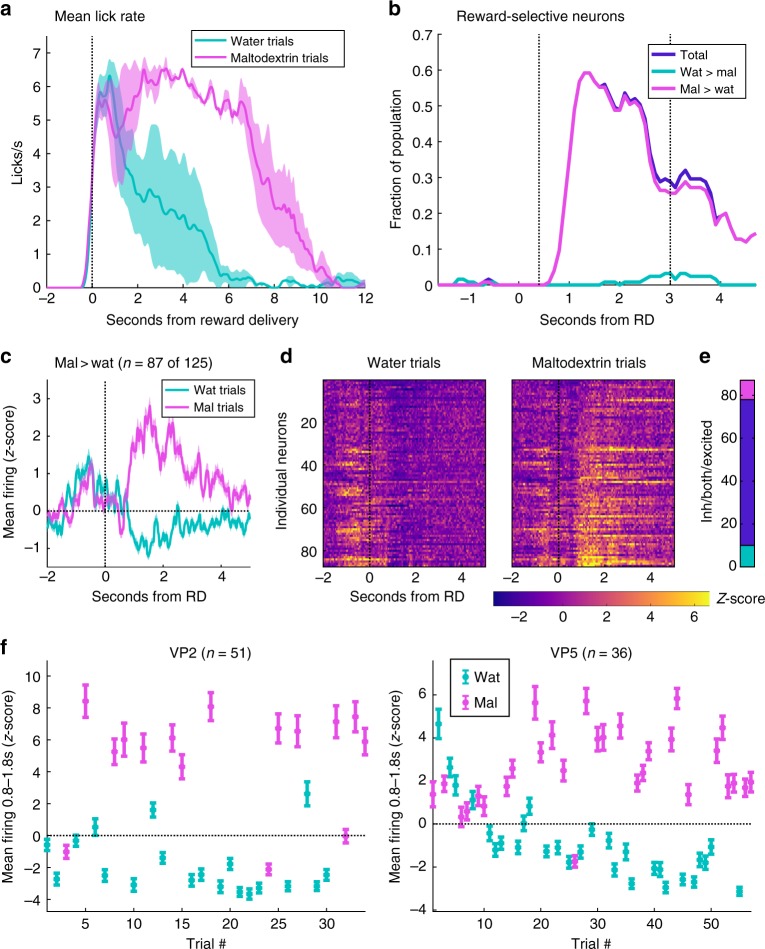Fig. 5.
VP reward-selective activity adjusts to reflect relative value of new outcomes. a Lick rate on water (blue) and maltodextrin (pink) trials. Shading is SEM. b Fraction of VP neurons that meet criteria for reward selectivity relative to reward delivery time (as in Fig. 2). Plotted are the total fraction of reward-selective neurons (dark blue) and, of those, neurons with greater firing for maltodextrin (pink) and greater firing for water (light blue). Dashed lines indicate the window (0.4–3 s) for which reward-selective neurons were selected for (c) and (d). c–e Neurons with greater firing for maltodextrin in any of the bins centered 0.4–3 s. c Average normalized firing rate for these neurons on water (blue) and maltodextrin (pink) trials. Shading is SEM. d Heat maps of the normalized activity of individual neurons on water and maltodextrin trials. e Number of neurons with maltodextrin excitations (pink), water inhibitions (light blue), or both (dark blue). f Emergence of maltodextrin (pink) excitations and water (blue) inhibitions among reward-selective neurons across each completed trial of the session. Plotted as mean normalized activity 0.8–1.8 s post reward delivery; error bars are SEM

